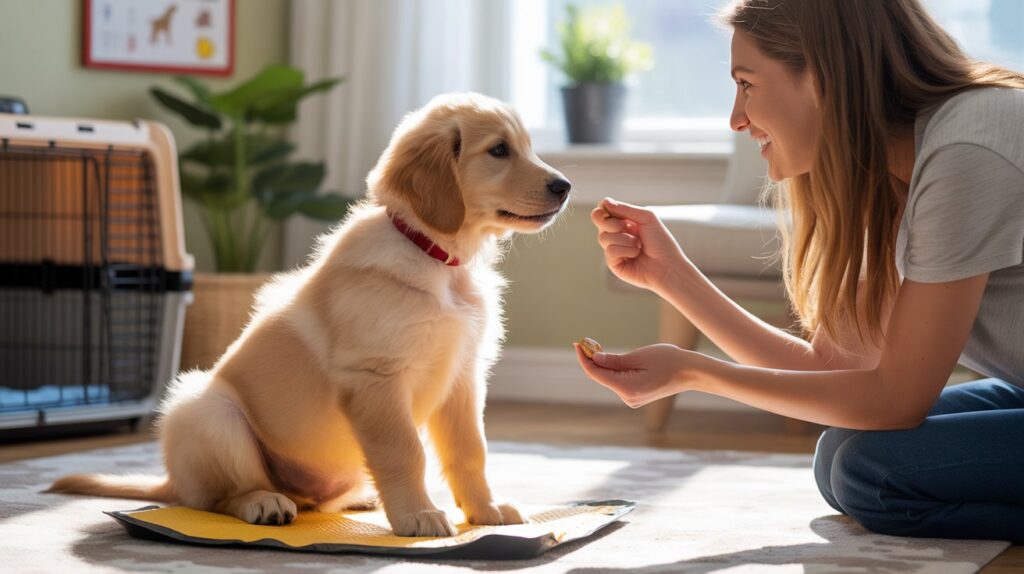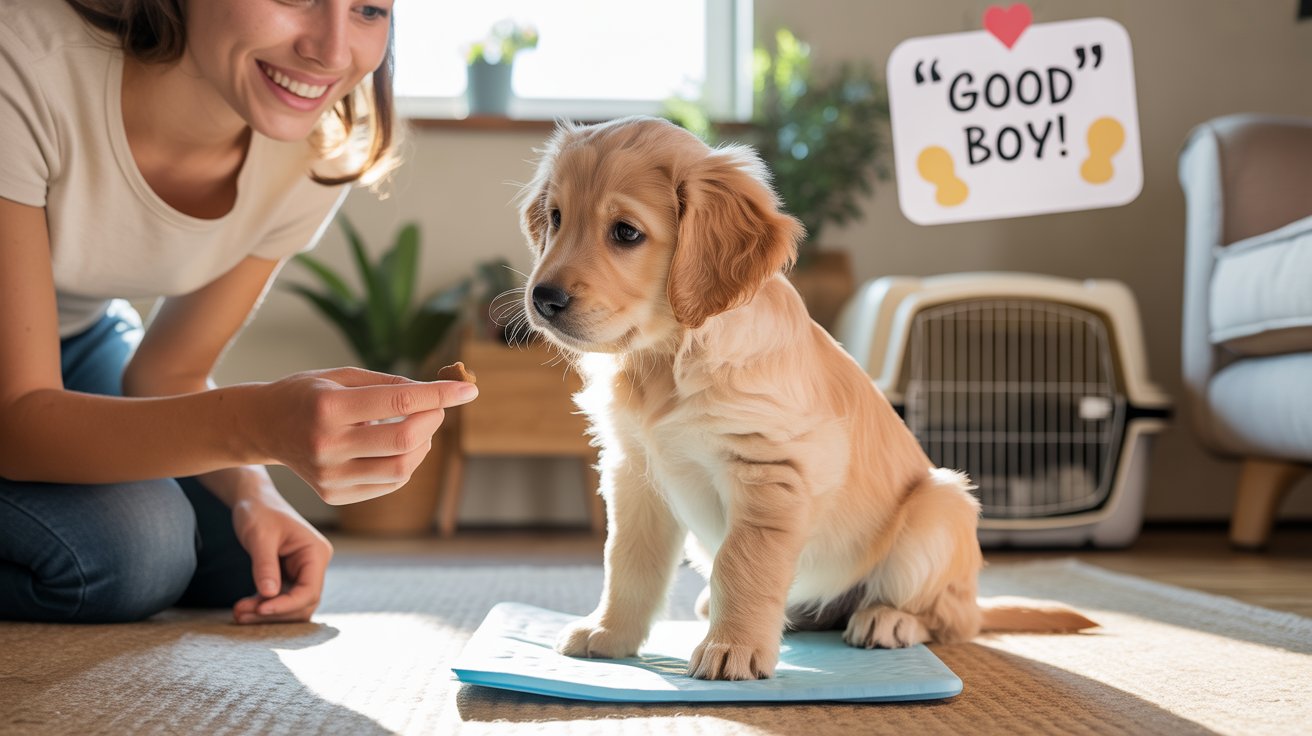Potty training a puppy can feel overwhelming for first-time dog owners, but with consistency, patience, and the right approach, your furry friend can be house-trained faster than you think.
In this beginner-friendly guide, we’ll explore research-backed methods, tips, and common pitfalls to avoid so you can confidently potty train your puppy.
Why Potty Training Early Is Crucial

Housebreaking your puppy as early as possible sets a strong behavioral foundation for life.
According to the American Kennel Club (AKC), puppies begin learning house habits as early as 8 weeks old.
Starting early helps prevent unwanted accidents, reduces stress, and promotes a cleaner, healthier environment.
How Long Does It Take to Potty Train a Puppy?
The average potty training timeline ranges from 4 to 6 months, but some breeds and individual dogs can take up to a year. Key factors include:
- Breed size (small breeds may need more frequent potty breaks)
- Age of the puppy
- Consistency in training
- Diet and healts
Best Methods for Potty Training a Puppy Fast
1. Create a Consistent Routine
Dogs thrive on routine. Feed your puppy at the same times daily, and take them outside immediately after eating, waking up, or playing.
Pro Tip: Puppies generally need to go every 1–2 hours during the day.
2. Choose a Potty Spot
Take your puppy to the same spot each time. The familiar scent helps reinforce the behavior.
3. Use Positive Reinforcement
Reward successful potty trips with verbal praise, treats, or affection. This encourages your puppy to repeat the behavior.
Avoid punishment—it can confuse your puppy and delay progress.
4. Supervise Indoors Closely
Keep an eye on your puppy when indoors. Look for signs like sniffing, circling, or whining, which could indicate they need to go.
5. Crate Training for Potty Success
Dogs instinctively avoid soiling their sleeping areas. Crate training helps establish bladder control and teaches your puppy to “hold it.”
- Ensure the crate is just large enough to turn around and lie down
- Never use the crate as punishment
6. Use Potty Training Pads Wisely
Training pads can be helpful in apartments or when you can’t take the puppy outside frequently. However, overuse may delay outdoor training.
Common Potty Training Mistakes to Avoid
- Inconsistency: Irregular feeding or potty breaks confuse the puppy.
- Lack of patience: Progress may not be linear. Setbacks are normal.
- Punishment: Scolding or rubbing their nose in accidents teaches fear, not discipline.
Potty Training Tips for Apartment Dwellers
If you live in an apartment:
- Use a balcony with artificial grass or a designated pee area
- Stick to a consistent schedule
- Make elevator rides quick and calm
Potty Training by Age
8–12 Weeks:
- Take your puppy out every 1–2 hours
- Use crate training to support structure
3–4 Months:
- Gradually extend the time between potty breaks
- Keep rewarding successes
5–6 Months:
- Puppy should start holding it for longer periods
- Fewer accidents indoors
FAQ: How to Potty Train a Puppy Fast
Q: What’s the fastest way to potty train a puppy?
A: Consistent routines, crate training, and positive reinforcement are key to fast results.
Q: How often should I take my puppy out?
A: Every 1–2 hours during the day, and after meals, naps, or play sessions.
Q: Can I use potty pads instead of going outside?
A: Yes, but use them strategically to avoid confusing your puppy.
Q: Is it too late to train an older puppy?
A: Not at all. While younger puppies learn faster, older ones can also be successfully trained with patience.
Final Thoughts
Potty training a puppy requires time, consistency, and compassion—but the rewards of a well-behaved, house-trained dog are worth it. Stay calm, follow a plan, and celebrate every small win. If you stick to a routine and support your puppy with positive reinforcement, you’ll see results faster than you expect.

Leave a Reply